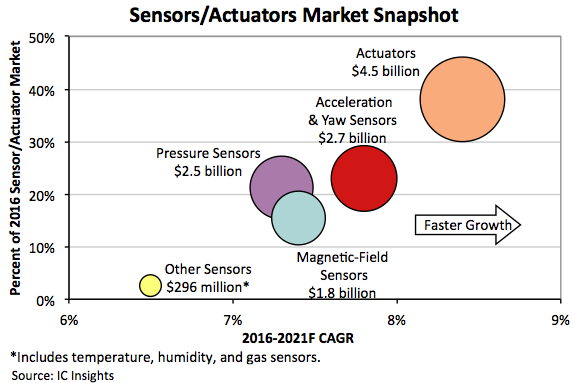- Ameya360 Component Supply Platform >
- Applications >
- Using sensor controllers to reduce power consumption in mobile computing
Using sensor controllers to reduce power consumption in mobile computing
Challenges in mobile computing
The most common challenges facing mobile computing system architects are reducing system size, cost, power consumption, and improving human machine interfaces (HMI). Size is a key feature in mobile computing because for mobile devices the systems have to be designed as small and as light as possible. Main processors and RAM are stacked up system-in-PCB to reduce the size of the printed circuit board (PCB). The3G/4G, GPS, Wi-Fi, near field communication (NFC), Bluetooth, and AM/FM radios are now combined in system-in-packages. The battery charger, fuel gauge, oscillators, and power regulators are also combined in a single package. The challenge is to keep miniaturizing these modules while adding more features to the system.
cost is one of the other driving requirements of the design cycle. The cost of the bill of materials (BOM) should be as low as possible without sacrificing system features. Self-sufficient devices with minimal external components are always desired. Every resistor, capacitor, inductor, regulator, or glue-logic associated to an active component impacts the total cost of the system.
Users now expect that a device will run for at least 8 hours. Current rechargeable battery technologies are based on lithium-polymer chemistry, which has helped increase battery life from 4-5 hours to at least 8 hours, but improving battery technology alone is not enough to assure maximum running time. System architects have to create a power budget for every block inside the system. The most power-hungry blocks are the 3G/4G and GPS radios, followed by the Wi-Fi, Bluetooth, NFC, and AM/FM radios. These radios are usually combined in a single package and are controlled individually by the host processor. A host processor consumes most of the battery charge since it has to be on most of the time. It manages complex tasks such as receiving/transmitting information over the 3G/4G radios, computes complex algorithms to render the images displayed on the screen, accesses information stored on the memory, plays music files, etc. System and software architects work together to keep the main processor in low-power modes as much as possible.
Sensors are a fundamental part of the human machine interface; sensors help the system identify the context and environmental conditions. Motion sensors such as accelerometers, gyroscopes, and magnetometers identify whether the system is on a flat surface or whether it is being moved or tilted in a certain position. They provide the orientation of the system and also help provide a more accurate position of the system by increasing the resolution of the GPS with dead-reckoning algorithms. They can also be used in conjunction with the Wi-Fi or 3G/4G radios to determine the position of the system inside a building where the GPS signal is not available. They are the preferred interface, and commonly used, in gaming and augmented reality applications. Sensors in mobile computing applications can track ambient light, barometric pressure, touch, temperature, and voice recognition.
Ambient light sensors help dim the backlight of the screen according to the surrounding light and can also be used as proximity sensors. Multiple ambient light sensors configured as proximity sensors can be used to identify gestures and offer an alternative to touch sensing interfaces. Barometric pressure sensors are used in altimeter applications. These sensors, along with the motion sensors, enable the device to become an indoor navigation system.
Touch sensors are currently the most common human machine interface; they are on every smartphone and tablet and are the preferred typing interface in small factor devices. Touch sensors are typically mounted on the displays.
Temperature sensors are widely used to keep track of the hot spots on the system. They provide feedback to the system to do thermal and power management.
Finally, voice recognition has been re-introduced to mobile computing devices. Algorithms have been enhanced so they can filter out noise and can understand people with different accents. Technological advances in microphones and analog-to-digital (ADC) devices have made this technology more affordable and efficient.
Previous:Wearable Wireless Healthcare Patch
Online messageinquiry

Sensors, Blockchains Meet Tomatoes
- Week of hot material
- Material in short supply seckilling
| model | brand | Quote |
|---|---|---|
| CDZVT2R20B | ROHM Semiconductor | |
| RB751G-40T2R | ROHM Semiconductor | |
| MC33074DR2G | onsemi | |
| BD71847AMWV-E2 | ROHM Semiconductor | |
| TL431ACLPR | Texas Instruments |
| model | brand | To snap up |
|---|---|---|
| ESR03EZPJ151 | ROHM Semiconductor | |
| IPZ40N04S5L4R8ATMA1 | Infineon Technologies | |
| STM32F429IGT6 | STMicroelectronics | |
| BP3621 | ROHM Semiconductor | |
| BU33JA2MNVX-CTL | ROHM Semiconductor | |
| TPS63050YFFR | Texas Instruments |
- Week of ranking
- Month ranking
Qr code of ameya360 official account
Identify TWO-DIMENSIONAL code, you can pay attention to


Please enter the verification code in the image below:
























